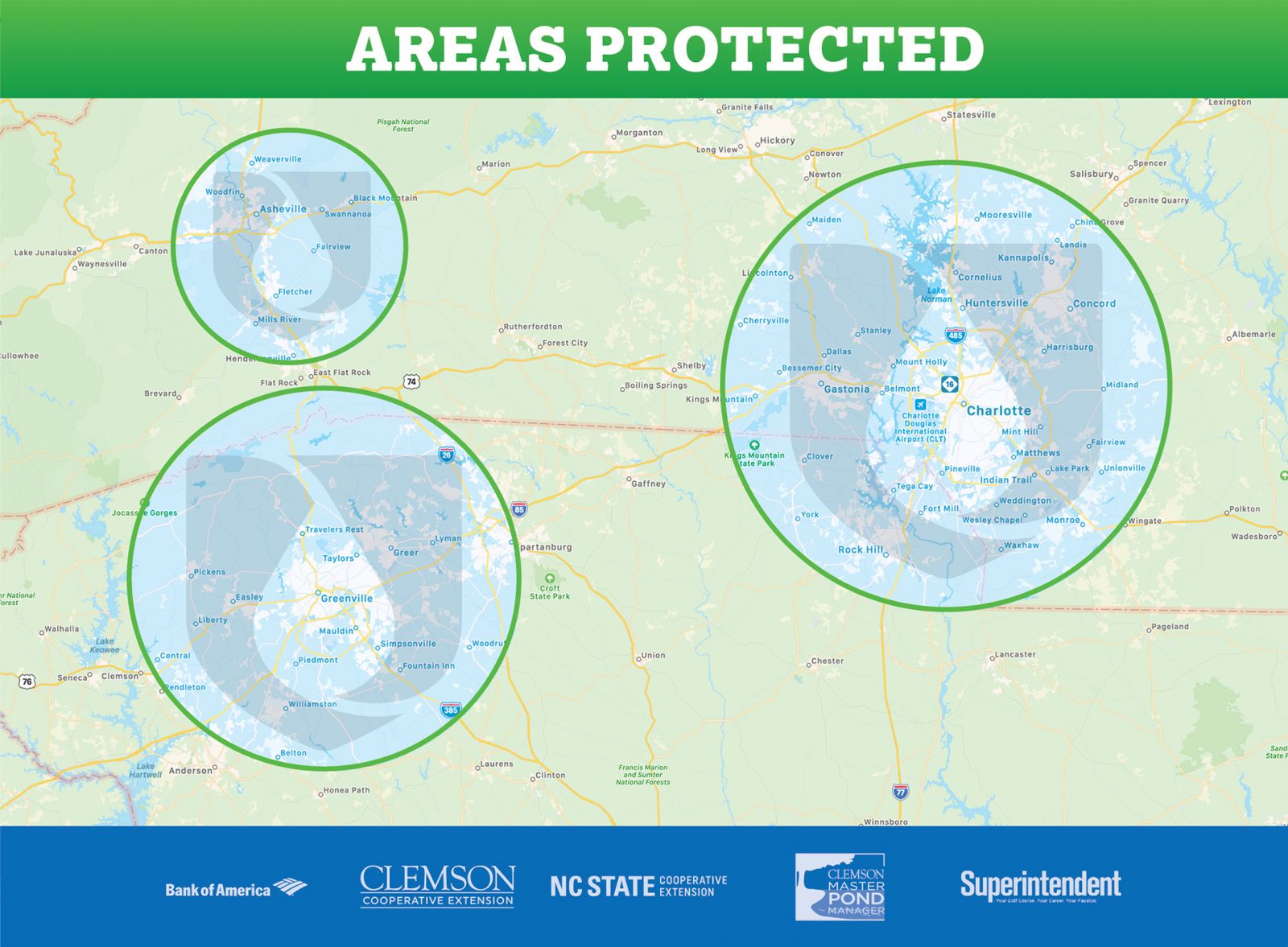If a picture is worth a thousand words. How about a video? We have been managing Asheton Lakes, off Woodruff Rd, in Greenville, SC for the past eight months. We have been using both proactive and reactive techniques each month to control massive algae blooms.
In fact, this why they first reached out to us for solutions. With the pond algae under control in less than two months, we began working on the biggest problem. Muck!
Because ponds naturally fill up with muck every 15-20 years, we have been reversing this trend through the use of enzymes giving valuable time to postponing the inevitable cost of sedimentation removal. Today we were able to capture it with video and pictures.
This picture was taken on the same day and only 40 ft away from where the video was taken. This is a separate body of water that is positioned to flow into the lake. The upper pond is managed, and the lake is unmanaged.
For the first time, we have been able to observe simultaneously two bodies of water connected while only treating one.
Here are the stunning results. First, in the photo, you will notice that algae have been prohibited from growth. This is of great importance as algae is a large source of the muck layer created by its rapid growth & death cycle.
Second, and perhaps “the proof in the pudding” is the dissolving of the leaves. Leaf litter, especially in heavily wooded areas, contribute a massive amount of debris to your pond or lake’s perimeter.
Yes, we know what you are thinking, but what happens in nature with ponds? Don’t pounds take care of themselves? Yes and No. To be honest. Yes, the leaves will decompose typically by July but, organically they have increased your muck layer in the pond, therefore decreasing it’s depth and increasing the need for sedimentation removal.
When regularly treating pond shorelines with enzymes, we see results like this photo in FEBRUARY! (Which we think is amazing biologically might I add…as it is like growing a refrigerator not a greenhouse). Not only are the leaves gone but, we have eaten them with enzymes reducing the muck and need for sedimentation removal. Cha-Ching$
That sound is money in your pocket. The average one-acre pond alone can cost between $50,000 - $75,000 to a neighborhood HOA every 15 years. Add to the formula another acre and difficult access you can be looking at sedimentation removal costs of $100,000 easily. Most HOA’s run out of funds, even after assessments, which limit the yards of sedimentation removal material that can be removed at one time.
We believe that by being stewards of water, we can not only make your pond or lake look pristine which adds value to your waterfront properties but, save you tens of thousands of dollars with a monthly ounce of prevention with our membership plans.
Still not convinced? We have the science to prove it. Sonar data, like an ultrasound, can create underwater contour maps to compare your muck layer year after year. (Click here to see videos & learn more about of Bathymetry or Contour Mapping)
Now serving Greenville SC, Spartanburg SC, Asheville NC, Charlotte NC, Winston-Salem NC, & Greensboro NC areas.
Get started. Become a member today!


